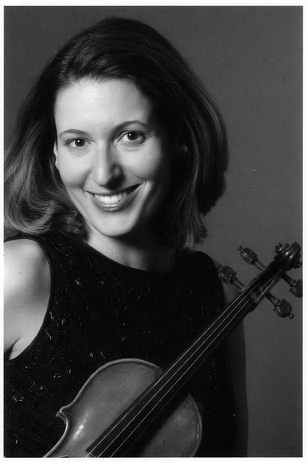By Stephen Brookes • The Washington Post • January 12, 2015
Orchestras tend to be cautious things, obliged by economics to stick to well-trod musical paths. So it’s always interesting to hear members of the National Symphony Orchestra play chamber music, where they can be as adventurous as they like. That was the case at the Terrace Theater on Sunday afternoon, when the Kennedy Center Chamber Players presented such unusual, rarely heard music as the modernism of Bela Bartok to the lush romanticism of Anton Arensky. Mariss RegniViolinists Marissa Regni and Jane Stewart opened the program with a dozen brief duos by Bartok. Written in the early 1930s as technical studies for the violin, they were never intended for performance, but Bartok being Bartok, neither are they light throwaways. Biting, playful, introspective and steeped in Hungarian folk music, the duos were as challenging expressively as they were technically, and Regni and Stewart made them sing. Regni was then joined by NSO principal cellist David Hardy for Maurice Ravel’s Sonata for Violin and Cello. The afternoon’s most familiar work, it also was its deepest and most accomplished — a lean, taut work that Hardy and Regni treated with the cut-to-the-bone seriousness it deserves.
Mariss RegniViolinists Marissa Regni and Jane Stewart opened the program with a dozen brief duos by Bartok. Written in the early 1930s as technical studies for the violin, they were never intended for performance, but Bartok being Bartok, neither are they light throwaways. Biting, playful, introspective and steeped in Hungarian folk music, the duos were as challenging expressively as they were technically, and Regni and Stewart made them sing. Regni was then joined by NSO principal cellist David Hardy for Maurice Ravel’s Sonata for Violin and Cello. The afternoon’s most familiar work, it also was its deepest and most accomplished — a lean, taut work that Hardy and Regni treated with the cut-to-the-bone seriousness it deserves.
The viola is often overshadowed in chamber music by its siblings in the string family, so the unusual Fantasia for Four Violas, Op. 41, No. 1, by British composer York Bowen, was something of a revelation. A quartet of violas might sound like too much of a good thing, but this warm, elegiac work conjures a striking range of textures and effects and handles them masterfully. It’s heartfelt (in a restrained, English way, of course) and elegant, perhaps a bit stuffy to modern ears but well worth hearing nonetheless.
The music of Arensky — a Russian prodigy who studied with Rimsky-Korsakov, drank himself to death at age 45 and, oddly, has a glacier in the Antarctic named after him — is not widely heard anymore, but his Quartet for Violin, Viola, and Two Cellos, Op. 35, from 1895, is a gem. The profound, introspective work written in memory of Tchaikovsky uses the two cellos to beautiful effect, adding depth and darkness without heaviness. The Kennedy Center players brought searing expressive purpose to the music, particularly in the massive second movement, with its elaborate variations on a theme of Tchaikovsky’s.